Kirstenbosch Garden - Part 3

Beez Neez now Chy Whella
Big Bear and Pepe Millard
Mon 13 Jan 2020 23:37
|
Kirstenbosch National Botanical Garden – Part
Three 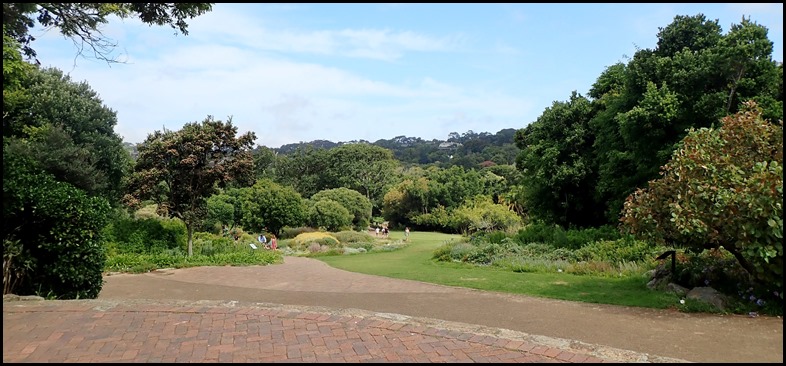 After our delicious lunch we bimbled
on. 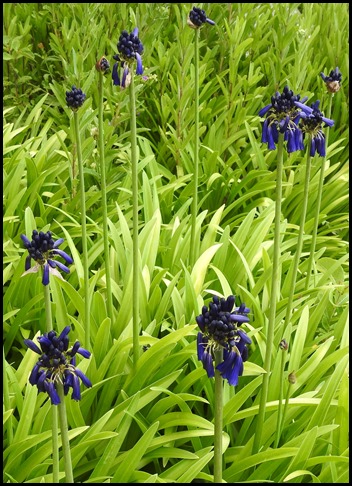 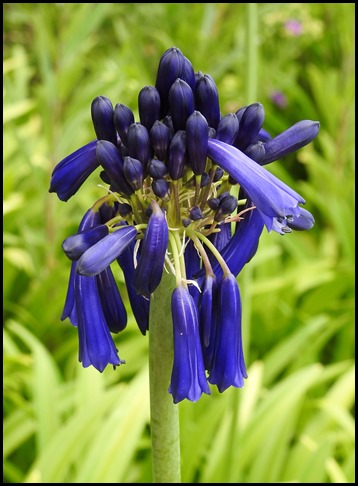 OK so I am back to agapanthus but these are
rather special and the growing instructions will come in handy – not interested
??? leave this bit and head to the next
picture. Far from home: This striking agapanthus
is a cultivar of Agapanthus inapertus subspecies pendulus called ‘Graskop’ after the town in Mpumalanga nearby where it was
collected by Kirstenbosch horticulturists in 1937. This species can be seen
growing wild in the grasslands in this area. Unlike the evergreen agapanthus,
the Graskop is deciduous, losing its leaves in autumn and going dormant during
winter. There are four deciduous species that
come from the Eastern Cape, Swaziland, Free State, Lesotho, Gauteng, Mpumalanga,
Limpopo and Mozambique:- companalatus – Bell agapanthus,
caulescens – Stem agapanthus, coddii – Waterberg agapanthus,
inapertus – Drooping agapanthus and many different forms, cultivars and
hybrids. You can see many of them growing here
at Kirstenbosch, and can tell them apart from the more well-known evergreen ones
because: they tend to flower later in the season, often have drooping flowers,
are often dark blue and their leaves are often in fans not mounds.
Quite easy to grow: The Graskop
agapanthus is easy to grow but requires more water and fertiliser than the more
commonly cultivated evergreen agapanthus. Plant Graskop, and other deciduous
agapanthus in a sunny position, in well-drained soil. Water abundantly during
the spring and summer and feed generously if your soil is poor. They are also
suitable for containers and can tolerate water during the winter provided the
soil is well-drained. The deciduous agapanthus are more hardy
in cold climates, making them ideal for cold frost gardens that struggle to grow
the ‘normal’ evergreens agapanthus. They can withstand sub zero temperatures for
short periods but are not hardy to prolonged periods below freezing temperatures
without some form of protection (I know how they
feel....). 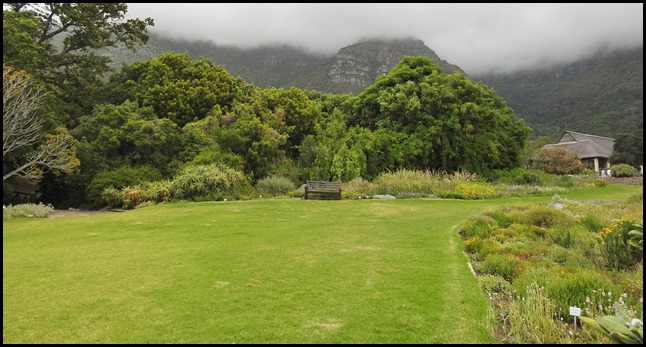 We crossed this lawn and beyond were attracted to big, white
blobs.   King of the
Fynbos and South Africa’ National Flower, here I go again.......Protea cynaroides guess who stopped at the shop on the
way in and is sporting three different protea seed packets and one of the
Paradise Flower. I’ll be handing them over at the end of June to Uncle Les ‘to
get them started for me’. If they fail then it won’t be for the lack of expert
growing hands. I feel sure that Aunty Pat and cousin Vicki will help with the
watering and Bertie will give them a good sniff or two. Tree-Artichoke from
Table Mountain was how the King Protea was described by botanists in the 1700s.
Its Latin name cynaroides means ‘like the Globe Artichoke, Cynara scalymus.’
They may look a bit alike but they are not related, the Globe Artichoke is a
kind of thistle and belongs to the Daisy Family (Asterracaea). And the King
Protea will not taste very nice, even seasoned with garlic (yuck) and
olive oil and dipped in
butter. The King Protea is endemic to the
Western and Eastern Cape. They grow wild in the mountains from the Cederberg to
Grahamstown, including Table Mountain. The King Protea is one of the easiest to
grow (good to know) and it does well in large
containers. 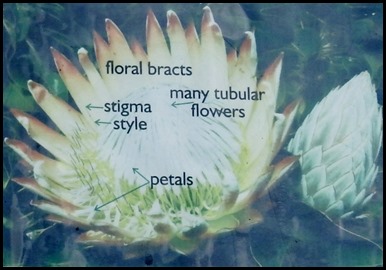 A bowl full of flowers: The King Protea
flowers mainly during the Cape’s rainy season, in autumn, winter and spring (May
– Oct). A protea flower is not a flower but a flower
head. It is many small flowers massed together inside a bowl of pointy
pink ‘petals’ (which are not true petals but modified leaves called floral
bracts). Each little flower has an upright, stick-like style and thread-like
petals, which lie in the base of the bowl when the flowers open. The flowers are
rich in nectar. People used to collect the nectar, boil it until it turned
syrupy and used it like sugar. This is why proteas are also known as
suikerbos (sounds like say-ker-boss, and means sugar bush) and
suikerkan (say-ker-kun, meaning sugar
tin). King Proteas are pollinated by birds
that feed on nectar. In Kirstenbosch you will see the Sugarbird (Promerops
cafer). which has a distinctive long tail, and brightly coloured sunbirds.
Now these may be a problem for Uncle Les in Buith Wells and me when they
get to Plymouth but I’m sure we will think of something, paintbrush comes to
mind, give it a good wiggle and waggle it on the next flower
head..... 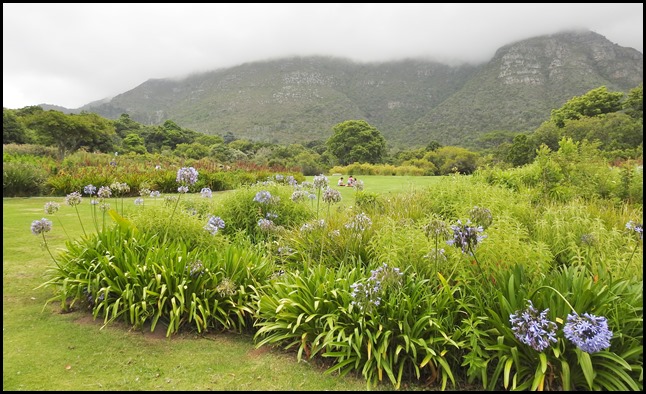 On we went in
search of the pond.  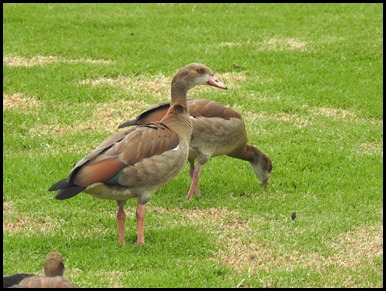 Ducks, we may be
getting warmer...... 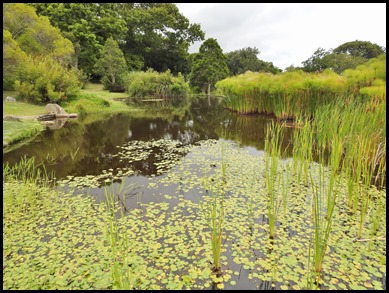 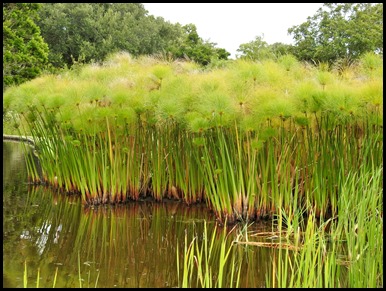 We found the
pond and enjoyed the feathery
rushes. 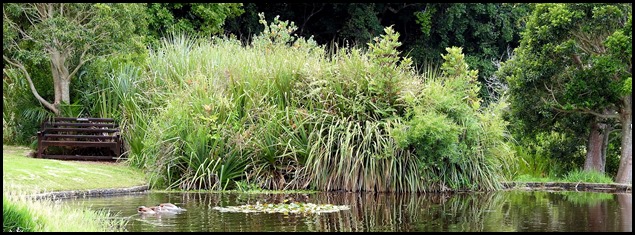 At the far end we could see some chaps having a
bath. 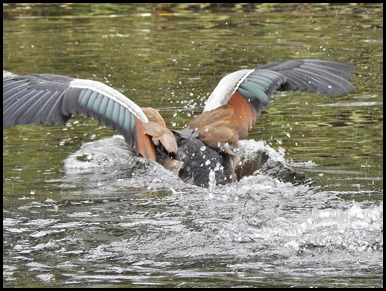 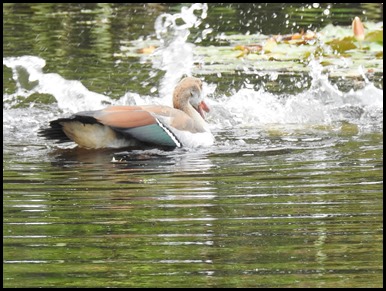 All went well until someone stole the soap and then there was an almighty
kerfuffle.  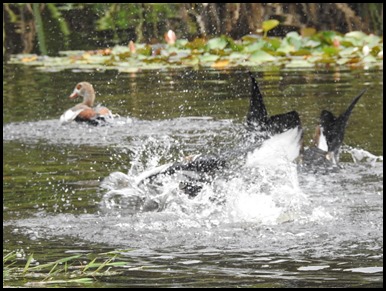 Onlookers
bemused as on it
went. 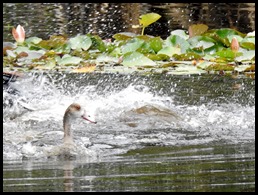   Eventually, the baddie was severely ducked in front of his wife, banished from the pond and refused to
face the camera..... 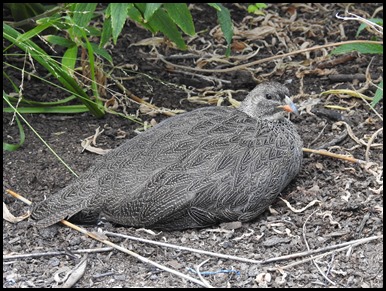 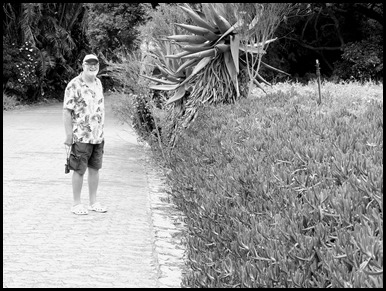 As we prepared to leave the main garden in
search of the Hothouse, I saw this little lady having an
afternoon rest. As she is fairly monochrome I put Bear in black and white
next to a wonderful, dense wall covering – such a
shame the wallflowers were not in full bloom but it’s not their season. Another
wistful thought for our
garden......... ALL IN ALL INDEED A NATIONAL
TREASURE
HUGE AND
MAGNIFICENT |